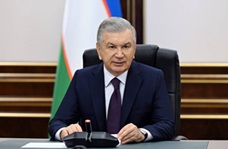Plans in the drinking water supply sector reviewed

This area is of exceptional importance for the quality of life and the population’s health, and is being steadily developed. Numerous facilities are being built under social and regional programs. 81 percent of populated areas are supplied with drinking water, while the sewerage system covers 20 percent.
For the current year, plans include laying 1,619 kilometers of water supply networks, 521 kilometers of sewerage networks, and constructing and reconstructing 162 facilities. As a result, 715,000 people will, for the first time, gain access to clean drinking water, and sewerage services will cover an additional 675,000.
Responsible officials reported on the progress of these initiatives.
A total of 21 projects are being implemented jointly with international financial institutions. This year, work amounting to $800 million is planned, with 138 hydraulic facilities set to be commissioned.
An effective pre-project financing mechanism has been developed in cooperation with the Asian Development Bank and the German Development Bank. Thanks to the advanced selection of contractors and designers, the practical implementation of projects is accelerated. It was noted that such an approach would be advisable for all future projects.
To digitalize the water supply system, $125 million has been attracted from the Asian Development Bank. Under this project, 4,800 smart meters and about 3,000 telemetry systems will be installed at major water facilities and on main pipelines over five years.
The need to train specialists who meet the new requirements was emphasized by the active development of international cooperation and public-private partnerships in this sector.
UzA





